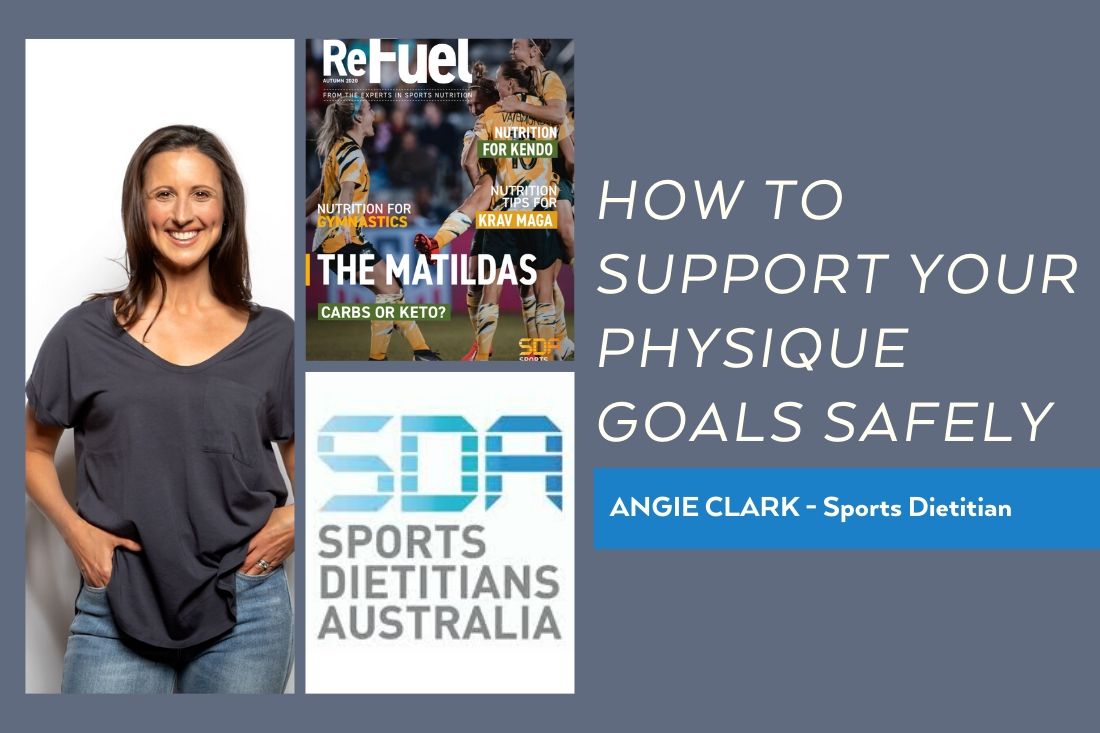Recently, Angie Clark (Perform Three Sixty’s Sports Dietitian) wrote an article for Sports Dietitian Australia’s (SDA) Re Fuel magazine. So we’d thought we’d share her wisdom amongst our community.
Read below for Angie’s article.
Physique manipulation is not an easy or quick feat. Successfully increasing lean mass whilst simultaneously reducing body fat requires the attention of specific nutritional requirements and a combination of patience and perseverance to be achieved safely.
BODY RECOMPOSITION CONSIDERATIONS
Nutrition that supports hypertrophy training and reduces body fat requires a conservative energy deficit and thus a slower rate of weight loss (0.5-1% bodyweight/week) to preserve lean mass. The severity of the deficit depends on initial body fat levels which is why it’s valuable to use accurate body composition assessment techniques to measure physique change and make informed decisions about dietary manipulation as the athlete progresses. The physique goal should always be balanced against the health, performance and lifestyle of the individual.
HIGHER PROTEIN INTAKE AND QUALITY
Physique athletes require significantly higher than average protein intakes (2.3-3.1g/kg) compared to other athletic populations. The benefit of this can contribute to improving body composition by preserving lean muscle in leu of heavy resistance training demands whilst in hypocaloric conditions. The thermic effect of higher protein intake can also contribute to increasing energy expenditure and offer more satiety.
The distribution of protein should be consumed evenly over 3-6 meals per day aiming for the pre and post resistance training meal to contain 0.4-0.5g protein/kg with an emphasis on high biological value protein foods such as eggs, fish, dairy, whey, animal meat or soy which contain essential amino acids to help achieve positive nitrogen balance. It’s favourable to set fat at 15-30% of total energy intake to support anabolic hormone health and the remainder of the energy budget from carbohydrate with a preference to prioritise this around training.
ADDRESSING ADAPTIVE THERMOGENSIS
Adaptive thermogenesis slows energy expenditure and upregulates hunger signals in response to obligatory calorie restriction – the dreaded plateau. Besides slower weight loss, resistance training and adequate protein, choosing higher fibre unprocessed foods and low-calorie beverages can help mitigate these effects. Strategic diet breaks to return energy to maintenance for small periods can be beneficial in reducing leptin and boosting metabolic rate whilst also offering mental relief and aiding dietary compliance.
SUPPLEMENTATION
Creatine Monohydrate, Caffeine and Beta-Alanine can be of benefit chasing physique goals particularly when energy budgets are low. Against extreme popularity of supplement use in these athletes, all other physique enhancing supplementation is not warranted to quicken results.
THE RISKS
Elite physique goals require meticulous dietary prescription which can lend itself to neurotic food and exercise behaviours, social isolation and low energy availability if not done systematically and under professional guidance especially for athletes with specific food preferences and clinical conditions. Athletes that choose to compete in this aesthetic sport present an extremely high risk of developing disordered eating triggered from long periods of caloric restriction and can struggle psychologically after competing from body image disorders. It’s imperative to ensure access to appropriate mental health support to normalise behaviours and execute a deliberate nutrition exit strategy to restore health post competition.
Angelique Clark
Accredited Sports Dietitian and Exercise Physiologist to the Fitness Industry specialising in physique athletes. Founder and director of iPerformance Nutrition www.iperformancenutrition.com.au and 360 Nutrition https://perform-360.com.au/dietitian-and-nutritionist/

